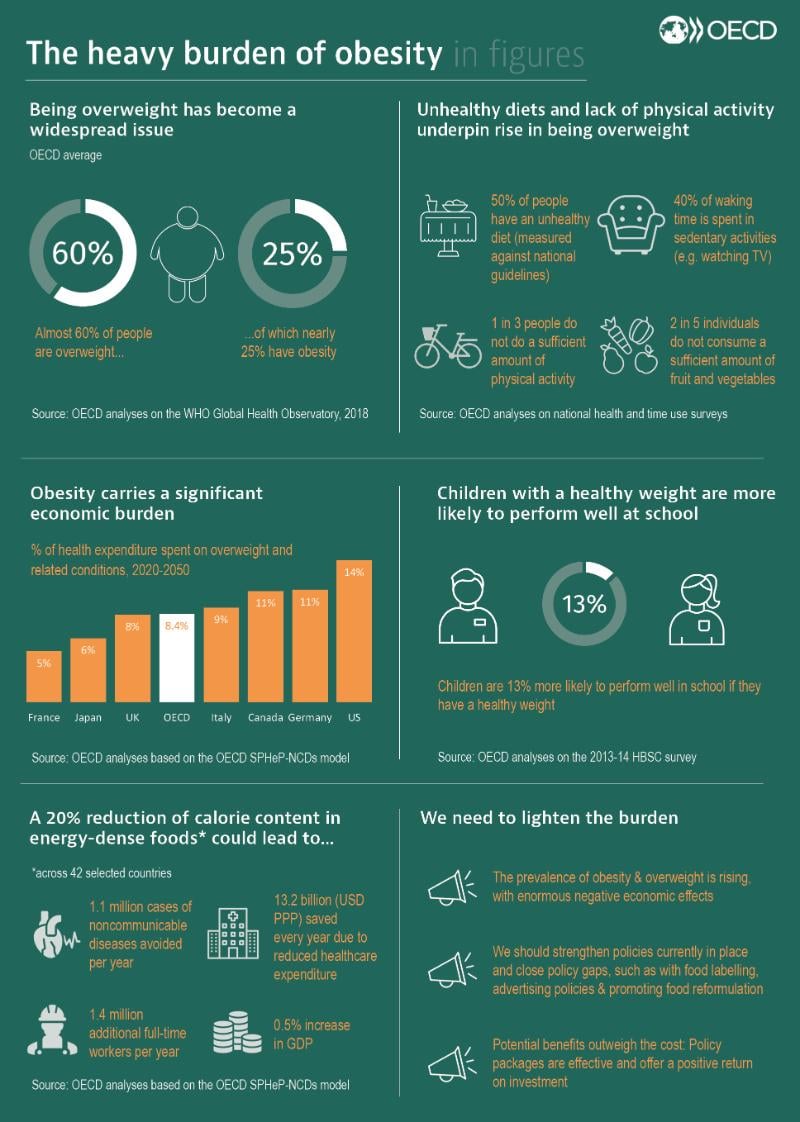Almost a decade after the publication of the first OECD report on obesity, a new one has been released. This are the facts:
More than half the population is now overweight in 34 out of 36 OECD countries and almost one in four people is obese. Average rates of adult obesity in OECD countries have increased from 21% in 2010 to 24% in 2016, so an additional 50 million people are now obese. Despite a drive in the last decade to deal with increased obesity, more needs to be done amid sedentary lifestyles and an almost 20% increase in calorie supply – i.e. calories available for consumption – in the OECD over the past 50 years.So what?
The OECD identifies four categories of policies to tackle the problem and gauges the effect of three promising “policy packages” to help countries achieve greater impact and coherence in tackling the obesity epidemic. Food and menu labelling, regulation of advertising of unhealthy foods to children and the promotion of exercise, including by doctors and schools, are among the measures analysed.Most of the strategies requires a confrontation with the food industry, and governments usually try to avoid it. We'll see what happens.
